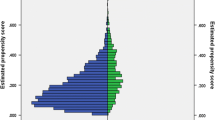Abstract
This research models default development for a large proprietary dataset of private (nonfederally guaranteed) education loans extended to law school students in the early 1990s. Employing the statistical techniques of survival analysis and credit scoring, the study documents a pronounced seasoning effect for such loans and demonstrates the robust predictive power of credit bureau scoring of student borrowers. Other constructs found to be statistically predictive of default include school-of-attendance (or, alternatively, a measure of perceived school reputation), geographic location of attended school, and new attorney unemployment rate within certain regions. Although statistically predictive, these last constructs are of far less substantive importance in assessing credit risk than are the effects of portfolio seasoning and scoring (an ordinal measure of the risk of extending credit to an individual based upon their past credit behavior). The article challenges the prevailing approach to modeling student loan default (one that searches for “institutional” as well as “borrower” explanations) and suggests a return to the older, simpler banking paradigm of borrower willingness and borrower ability to repay.
Similar content being viewed by others
REFERENCES
Allison, P. D. (1995). Survival Analysis Using the SAS System: A Practical Guide, Cary, NC: SAS Institute Inc.
American Council on Education. (1997). New Information of Student Borrowing. ACE Policy Brief October 1997. Washington, DC: ACE Division of Government and Policy Affairs.
Dynarski, M. (1994). Who defaults on student loans? Findings from the National Postsecondary Student Aid Study. Economics of Education Review 13(1): 55–68.
Flint, T. A. (1997). Predicting student loan defaults. Journal of Higher Education 68(3): 322–354.
Greene, L. L. (1989). An economic analysis of student loan default. Educational Evaluation and Policy Analysis 11(1): 61–68.
Harrison, M. (1995). Default in guaranteed student loan programs. Journal of Student Financial Aid 25(2): 25–41.
Knapp, L. G. and Seaks, T. G. (1992). An analysis of the probability of default on federally guaranteed student loans. Review of Economics and Statistics 74(3): 404–411.
Koselka, R. and Oliver, S. (1995). Hairdressers, anyone? Forbes, May 22, 1995, pp. 122–128.
Monteverde, K. A. (1998). Managing student loan default risk. IHELG Monograph 97-9, Working Paper revised Summer 1998, Houston: Institute for Higher Education Law and Governance, University of Houston Law Center.
National Association for Law Placement. (1993). Class of 1992: Employment Report and Salary Survey. Washington, DC: NALP.
National Association for Law Placement. (1994). Class of 1993: Employment Report and Salary Survey. Washington, DC: NALP.
National Association for Law Placement. (1995). Class of 1994: Employment Report and Salary Survey. Washington, DC: NALP.
U.S. News and World Report. (1996). A move to ethics. America's Best Graduate Schools, pp. 18–24 and 87-101.
Volkwein, J. F. and Szelest, B. P. (1995). Individual and campus characteristics associated with student loan default. Research in Higher Education 36(1): 41–72.
Volkwein, J. F., Szelest, B. P., Cabrera, A. F. and Napierski-Prancl, M. R. (1998). Factors associated with student loan default among different racial and ethnic groups. Journal of Higher Education 69(2): 206–237.
Wilms, W. W., Moore, R. W. and Bolus, R. E. (1987). Whose fault is default? Educational Evaluation and Policy Analysis 9(1): 41–54.
Author information
Authors and Affiliations
Rights and permissions
About this article
Cite this article
Monteverde, K. Managing Student Loan Default Risk: Evidence from a Privately Guaranteed Portfolio. Research in Higher Education 41, 331–352 (2000). https://doi.org/10.1023/A:1007090811011
Issue Date:
DOI: https://doi.org/10.1023/A:1007090811011




